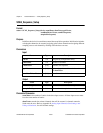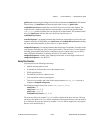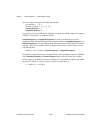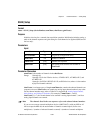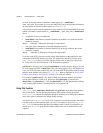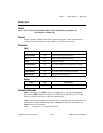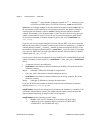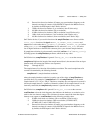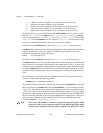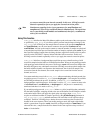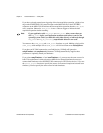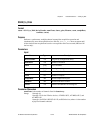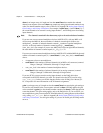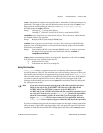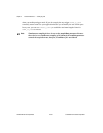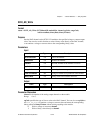
Chapter 2 Function Reference — SCAN_Start
NI-DAQ FRM for PC Compatibles 2-312
©
National Instruments Corporation
1: 1 MHz clock used as timebase (1 µs resolution) (non-E Series only).
2: 100 kHz clock used as timebase (10 µs resolution).
3: 10 kHz clock used as timebase (100 µs resolution) (non-E Series only).
4: 1 kHz clock used as timebase (1 ms resolution) (non-E Series only).
5: 100 Hz clock used as timebase (10 ms resolution) (non-E Series only).
On E Series devices, if you use this function with scanTimebase set to 0, you must call the
function
Select_Signal with signal set to ND_IN_SCAN_CLOCK_TIMEBASE and source
set to a value other than
ND_INTERNAL_20_MHZ and ND_INTERNAL_100_KHZ before calling
SCAN_Start with scanTimebase set to 0; otherwise, SCAN_Start will select low-to-high
transitions on the PFI8 I/O connector pin as your external scan timebase.
On DSA devices, scanTimebase is ignored. Use
DAQ_Set_Clock
to set the scan rate.
scanInterval indicates the length of the scan interval (that is, the amount of time that elapses
between the initiation of each scan sequence). NI-DAQ scans all channels in the scan
sequence at the beginning of each scan interval.
Range: 0 or 2 through 65,535.
On DSA devices, scanInterval is ignored. Use
DAQ_Set_Clock
to set the scan rate.
If scanInterval equals zero, the time that elapses between A/D conversions and the time that
elapses between scan sequences are both equal to the sample interval. That is, as soon as the
scan sequence has completed, NI-DAQ restarts one sample interval later. Another advantage
of setting scanInterval to 0 is that this frees the scan-interval counter (counter 2) for other
operations such as waveform generation or general-purpose counting (non-E Series devices
only).
The scan interval is a function of the scan timebase resolution. The actual scan interval in
seconds is determined by the following formula:
scanInterval
*
(scan timebase resolution)
where the scan timebase resolution is equal to one of the values of scanTimebase as indicated
above. For example, if scanInterval = 100 and scanTimebase = 2, the scan interval is 100
*
10 µs = 1 ms. This number must be greater than or equal to the sum of the total sample interval
+
2 µs for most devices. The scan interval for the AT-MIO-16X must be at least 11 µs longer
than the total sample interval. The scan interval for the AT-MIO-16F-5 and AT-MIO-64F-5
must be externally controlled, at least 6 µs longer than the total sample interval. If the scan
interval is to be controlled by pulses applied to the OUT2 signal, NI-DAQ ignores this
parameter (extConv = 2 or 3, see
DAQ_Config).
Note The E Series and the MIO-F-5/16X devices support external control of the sample
interval even when you use interval scanning. For the MIO-16/16D, if the sample
interval is to be controlled externally by pulses applied to the EXTCONV* input,



